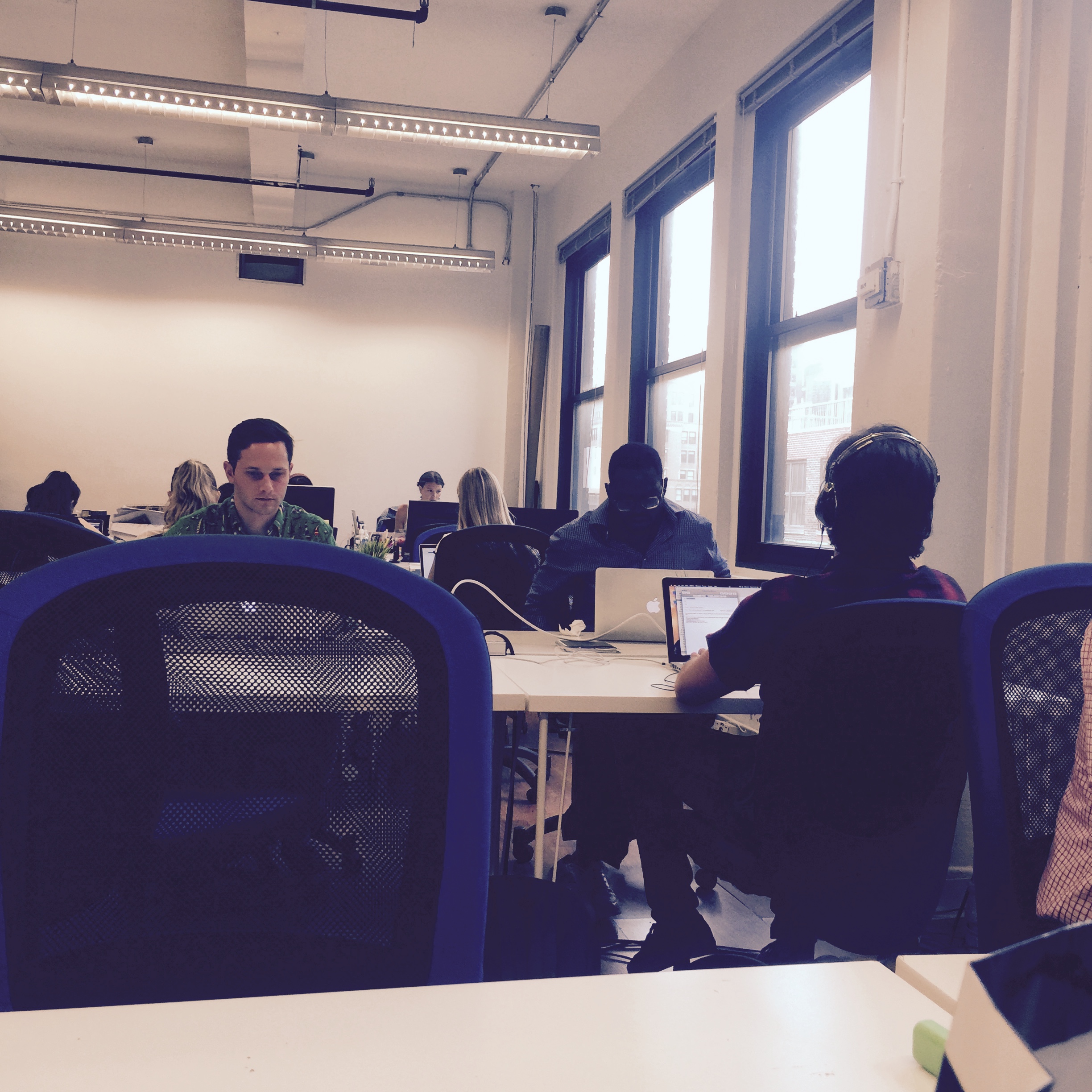Brand + Business x Christine Moody*

Co-work spaces are a new trend emerging both in Australia and overseas.
I have been following this trend for a few years and subscribing to a few sites, but there is nothing like going to experience these co-work spaces. So last year, I spent more than a month running my business from a co-work space in New York.
It was fantastic to experience this new phenomenon first-hand. My verdict: co-work spaces give you a lot more than your standard office space.
…co-work spaces give you a lot more than your standard office space.
Before leaving for New York, I did the rounds of what was on offer in Brisbane. However, I wasn’t inspired. As a Designer, I am used to working in open plan, created spaces. Moving to another creative, open plan space didn’t offer me anything new. They all felt either too creative and not professional enough, or too professional and not creative enough. None of them had the energy or vibrancy I was hoping to find.
However, my New York experience sold co-work space to me completely.
Co-work spaces are meant to be bout working with a diverse group of people. They are also about getting to see how / why other people work. They create an environment where you can have discussions with people outside of your circle of colleagues: an unscheduled discussion or corridor meeting that can spark a new idea or add to an existing project. These unplanned discussions can even help establish collaboration on a future project.
Co-work spaces are about building a community and fostering a feeling of being part of something exciting. And most of all it is about being away from your ‘normal life’.
Co-work spaces are about building a community and fostering a feeling of being part of something exciting.
I tried to put my finger on why New York co-work spaces are so different. It is an exciting city (of course!). The co-work spaces had the energy and vibrancy of a creative community. The founders worked hard to create a space that inspired creativity and ensured that they get the right people on board.
The design of physical environment of a co-work space is so important. As I’ve already said, it needs to have the right balance between creative and professional. However, it also needs to be flexible enough to work for social events as well.
Here are four things my New York co-work trial revealed:
- It’s not about selling ‘desk space’ or a place to go everyday. It is about building a community.
- It’s crucial to have a mix of spaces on offer from noisy (where you can be on the phone anytime) spaces to private office space to take / make important phone calls and have meetings.
- After-hours socials in the space build community and are even better when there are speakers. I went to as many of these as I could and learnt so much from a range of start-ups and VCs.
- Getting the right space and the right building in the right suburb is crucial as the journey to your desk is just as important. That is, it has to be in a location that is surrounded by inspiring cafes, shops, and galleries—easy in New York!
While it might look like a room full of people seated at desks, the co-work space is a community and it is the feeling of being part of this community that makes it work. And it is this community that makes all the difference.
*Christine Moody is one of Australia’s leading brand strategists and the founder brand management consultancy, Brand Audits. With more than 30 years’ professional experience, Christine has helped a diverse client base of local and international brands, including Gold Coast City Council, Hilton Hotels, and Wrigleys USA, to develop, protect and achieve brand differentiation. Her particular interest is personal brand audits to assist executives realise their full potential.
For more information: chris.moody@brandaudits.com.au or +61 419 888 468.




